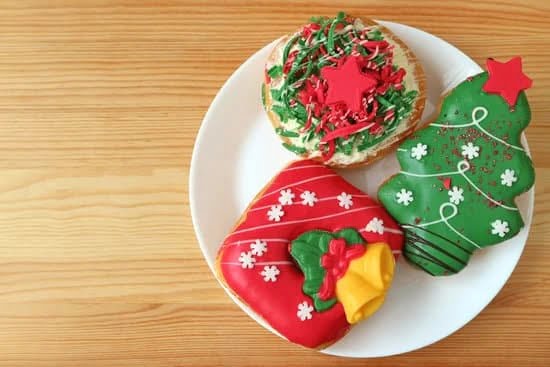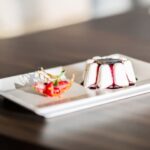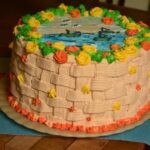Are you looking to learn how to ice and decorate a cake like a pro? Whether you’re a beginner or want to enhance your decorating skills, this article will guide you through the art of cake decorating. From essential tools and ingredients to step-by-step instructions for icing and creative decorating techniques, we’ve got you covered.
Cake decorating is not just about making a cake look beautiful, but also about showcasing your creativity and personality. With the right tools, ingredients, and techniques, you can create stunning cakes for any occasion. Whether it’s a birthday, wedding, or holiday celebration, learning the art of cake decorating will allow you to impress your friends and family with your creations.
In this article, we’ll explore the essential tools and ingredients needed for icing and decorating a cake. We’ll also discuss different types of cake icing such as buttercream, fondant, and royal icing. Additionally, we’ll provide step-by-step guides for achieving smooth and neat icing as well as creative decorating techniques including piping, fondant sculpting, and edible decorations. So let’s dive into the world of cake decorating and unleash your creativity.
Essential Tools and Ingredients for Icing and Decorating a Cake
When it comes to icing and decorating a cake, having the right tools and ingredients is essential for achieving professional-looking results. Here are some basic tools and ingredients that you will need to get started:
Essential Tools:
- Offset spatula: This tool is used for spreading and smoothing the icing onto the cake.
- Piping bags and tips: These are utilized for creating decorative designs with icing, such as borders, flowers, and writing.
- Cake turntable: A revolving stand that makes it easier to ice and decorate the cake evenly from all sides.
- Bench scraper: This tool is perfect for achieving smooth edges when icing the cake.
Essential Ingredients:
- Cake layers: Whether you bake your own cake or purchase pre-made ones, having a good foundation is key to successful cake decorating.
- Buttercream frosting: A classic choice for icing a cake, buttercream is easy to work with and can be flavored and colored in various ways.
- Fondant: A pliable sugar mixture that can be rolled out to cover the cake for a smooth, polished finish.
By having these essential tools and ingredients on hand, you will be well-equipped to start learning how to ice and decorate a cake like a pro. As you gain experience and confidence, you can begin to expand your collection of tools and experiment with different types of decorations. Remember, practice makes perfect.
Preparing the Cake for Icing
When it comes to icing and decorating a cake, the preparation of the cake itself is just as important as the final decorative touches. Before you can start creating beautifully smooth icing or intricate designs, you need to ensure that your cake is properly leveled, crumb coated, and chilled.
Leveling the cake is an essential step to ensure that your finished product has a professional appearance. Using a long serrated knife or a cake leveler, carefully trim off any uneven domes or bumps from the top of each layer. This will create a flat surface for your icing and decorations, preventing any lopsidedness in the finished product.
After leveling, crumb coating is the next crucial step in preparing your cake for decoration. A crumb coat is a thin layer of icing that seals in any loose crumbs on the surface of the cake.
This initial layer provides a smooth base for the final coat of icing and helps to prevent crumbs from mixing into the finished look. To crumb coat your cake, spread a thin layer of icing over the entire surface, then chill the cake in the refrigerator for at least 30 minutes to allow it to set.
Chilling your crumb-coated cake before adding the final layer of icing helps to further solidify the structure and make it easier to work with. It also prevents crumbs from getting mixed up with your final decorative icing. By following these steps when preparing your cake for icing, you will set a solid foundation for executing professional-looking decorations that will truly impress your guests or clients.
Different Types of Cake Icing
Buttercream, fondant, and royal icing are three of the most popular choices when it comes to icing a cake. Each type of icing has its own unique characteristics, and the choice of which to use often depends on the desired look and taste of the finished product.
Buttercream
Buttercream is a classic choice for cake icing. It is made from butter, powdered sugar, and flavorings such as vanilla or cocoa powder. There are different variations of buttercream, including American buttercream (made with powdered sugar) and Swiss meringue buttercream (made with egg whites). It is smooth, creamy, and easy to work with, making it a go-to option for both beginner and experienced decorators.
Fondant
Fondant is a versatile type of icing that can be rolled out and draped over a cake to create a smooth, flawless finish. It is made from sugar, water, gelatin, and glycerin, giving it a pliable texture that can be molded into various shapes and designs. Fondant provides a clean canvas for elaborate decorations and is often used for special occasion cakes such as wedding or birthday cakes.
Royal Icing
Royal icing is a hard-drying icing made from confectioners’ sugar and egg whites or meringue powder. It dries to a smooth, matte finish and is commonly used for intricate piping work such as delicate lace designs or intricate flowers. While it may not be as tasty as other types of icing, royal icing is valued for its ability to hold intricate shapes and designs without melting or losing its form.
When considering how to ice and decorate a cake using these different types of icings, it’s important to choose based on the desired look, taste preferences of those who will be enjoying the cake, and the complexity of the design being created. Each type of icing has its own strengths and can create beautiful results in skilled hands.
Step-by-Step Guide to Icing a Cake Smoothly and Neatly
When it comes to icing a cake, whether you are a beginner or an experienced baker, it’s important to have the right techniques to achieve a smooth and neat finish. In this step-by-step guide, we will walk you through the process of icing a cake like a pro.
First, make sure that your cake is completely cooled before you start icing it. This will prevent the icing from melting and creating a mess. If you have baked your cake in layers, use a serrated knife to level off the tops so that each layer is even.
Next, apply a thin layer of frosting all over the cake to create a crumb coat. This will seal in any loose crumbs and provide a smooth base for the final layer of frosting. Once the crumb coat is applied, chill the cake in the refrigerator for about 30 minutes to allow the frosting to set.
Now it’s time to add the final layer of frosting. Start by adding a generous amount of frosting on top of the chilled cake, then use an offset spatula to spread it evenly across the top and sides. To get that smooth finish, dip your spatula in hot water and run it over the surface of the frosting to create a sleek look. Repeat this process until you achieve your desired smoothness.
| Step | Description |
|---|---|
| 1 | Make sure cake is completely cooled before icing |
| 2 | Apply a thin layer of frosting for crumb coat |
| 3 | Dip spatula in hot water for smooth finish |
Creative Cake Decorating Techniques
One of the most enjoyable aspects of cake decorating is the opportunity to get creative with various techniques. Piping, fondant sculpting, and edible decorations are just a few of the many ways you can take your cake from simple to stunning. Mastering these techniques will take time and practice, but the results will be well worth it.
Piping is the process of using a pastry bag and different tips to create intricate designs or add decorative details to a cake. Different tips can create different effects, from ruffles and rosettes to intricate lace patterns. Whether you’re using buttercream or royal icing, piping allows for endless possibilities when it comes to decorating a cake.
Fondant sculpting is another popular technique for creating elaborate designs on cakes. Rolled fondant can be shaped and molded into just about anything you can imagine, from delicate flowers to 3D figurines. With a little patience and some basic tools, you can bring your cake to life with custom fondant decorations.
Edible decorations such as fresh fruit, chocolate shavings, or even edible flowers can add a pop of color and flavor to your cake. These simple yet elegant additions can take your cake decorating to the next level and really showcase your creativity.
| Creative Cake Decorating Techniques | Examples |
|---|---|
| Piping | Rosettes, Lace Patterns |
| Fondant Sculpting | Flowers, Figurines |
| Edible Decorations | Fresh fruit, Chocolate shavings, Edible flowers |
Tips and Tricks for Decorating a Cake Like a Pro
Decorating a cake like a professional baker may seem daunting, but with the right tips and tricks, you can achieve beautiful and impressive results. Whether you’re a beginner or an experienced baker looking to take your cake decorating skills to the next level, these techniques will help you create stunning cakes that are sure to impress.
Use the Right Tools and Equipment
Having the proper tools and equipment is essential for achieving professional-looking cake decorations. Invest in a good set of piping tips, pastry bags, offset spatulas, and a turntable for easy icing application. These tools will make it easier for you to smooth out icing and create intricate designs on your cakes.
Practice Patience
One of the most important tips for decorating a cake like a pro is to practice patience. Take your time when icing the cake and allow each layer of frosting to set before adding additional decorations. Rushing through the process can lead to uneven or messy results, so give yourself plenty of time to work on your cake.
Experiment With Different Techniques
Don’t be afraid to experiment with different decorating techniques such as piping, fondant sculpting, and edible decorations. Each technique offers its own unique look and feel, so try incorporating a variety of methods into your cake decorating repertoire. This will not only help you develop your skills but also allow you to create diverse and eye-catching designs.
By following these tips and tricks, you’ll be well on your way to decorating cakes like a pro. Remember that practice makes perfect, so don’t be discouraged if your first few attempts aren’t exactly what you had envisioned. With time and dedication, you’ll soon master the art of cake decorating and be able to showcase your creativity through beautifully decorated cakes for all occasions.
Special Occasion Cake Decorating Ideas
When it comes to special occasions, the cake is often the center of attention. Whether it’s a birthday, wedding, or holiday celebration, a beautifully decorated cake can add an extra touch of festivity to any event. In this section, we’ll explore some creative and unique cake decorating ideas for these special occasions.
Birthday Cakes
For a birthday cake, consider incorporating the celebrant’s favorite colors, hobbies, or interests into the design. You can use vibrant buttercream icing to create fun patterns and swirls, or opt for a themed fondant decoration that reflects the birthday person’s personality. For kids’ birthdays, consider adding edible images of their favorite cartoon characters or superheroes to make the cake extra special.
Wedding Cakes
When it comes to wedding cakes, elegance and sophistication are key. Consider using delicate fondant flowers or intricate piping designs to adorn the tiers of the cake. Metallic accents such as gold or silver leaf can add a touch of glamour to a wedding cake. Many couples also opt for personalized cake toppers or monogrammed decorations to reflect their unique love story.
Holiday Cakes
For holiday cakes, consider incorporating seasonal flavors and decorations. Pumpkin spice and cinnamon are perfect for fall-themed cakes, while peppermint and cranberry flavors work well for winter holidays. Decorate with festive motifs such as snowflakes, holly leaves, or Easter eggs depending on the occasion. Edible glitter and shimmer dust can also add a magical touch to holiday cakes.
By incorporating these creative ideas into your cake decorating repertoire, you can cater to a wide variety of special occasions in style. Remember that when it comes to cake decorating for special events, creativity knows no bounds. With the right tools and techniques at your disposal, you can turn any ordinary cake into a work of art that will impress and delight your guests.
Conclusion
In conclusion, mastering the art of cake decorating is not only a delightful hobby but also a valuable skill that can bring joy to yourself and others. By learning how to ice and decorate a cake, you can showcase your creativity and express your personality through the beautiful and delicious creations you make. From simple buttercream designs to intricate fondant sculptures, there are countless techniques and styles to explore in the world of cake decorating.
The essential tools and ingredients for icing and decorating a cake are easy to obtain, and with practice, anyone can become proficient in this craft. Preparing the cake for icing is an important step that ensures a smooth and polished finish, while knowing the different types of icing allows you to choose the best one for each project.
Whether it’s piping elegant designs, sculpting intricate figures from fondant, or adding edible decorations, there are endless ways to personalize your cakes and create something truly unique.
By implementing the tips and tricks for decorating a cake like a pro, you can elevate your skills to the next level and impress friends and family with professional-looking results. With special occasion cake decorating ideas for birthdays, weddings, holidays, or any other event, you have the opportunity to tailor your creations and make meaningful connections through your art.
As long as you approach cake decorating with creativity, patience, and enthusiasm, there’s no limit to what you can achieve in this delightful pastime.
Frequently Asked Questions
What Is the Best Way to Apply Icing and Frost on a Cake?
The best way to apply icing and frosting on a cake is to start with a crumb coat to seal in any loose crumbs. Then, apply a final layer of icing using an offset spatula for smoothness.
How Do You Ice a Cake to Look Professional?
To ice a cake to look professional, it’s important to use the right tools and techniques. Start by leveling the cake layers, then apply a thin crumb coat before adding the final layer of icing. Use an offset spatula for smooth, even coverage.
How Do You Make a Homemade Cake Look Professional?
Making a homemade cake look professional can be achieved by taking the time to level the cake layers, apply a crumb coat, and use a piping bag with different tips for decorative touches. Additionally, choosing complementary flavors and colors can enhance the overall presentation.

Welcome to our cake decorating blog! My name is Destiny Flores, and I am the proud owner of a cake decorating business named Cake Karma. Our mission is to provide delicious, beautiful cakes for all occasions. We specialize in creating custom cakes that are tailored specifically to each customer’s individual needs and tastes.





